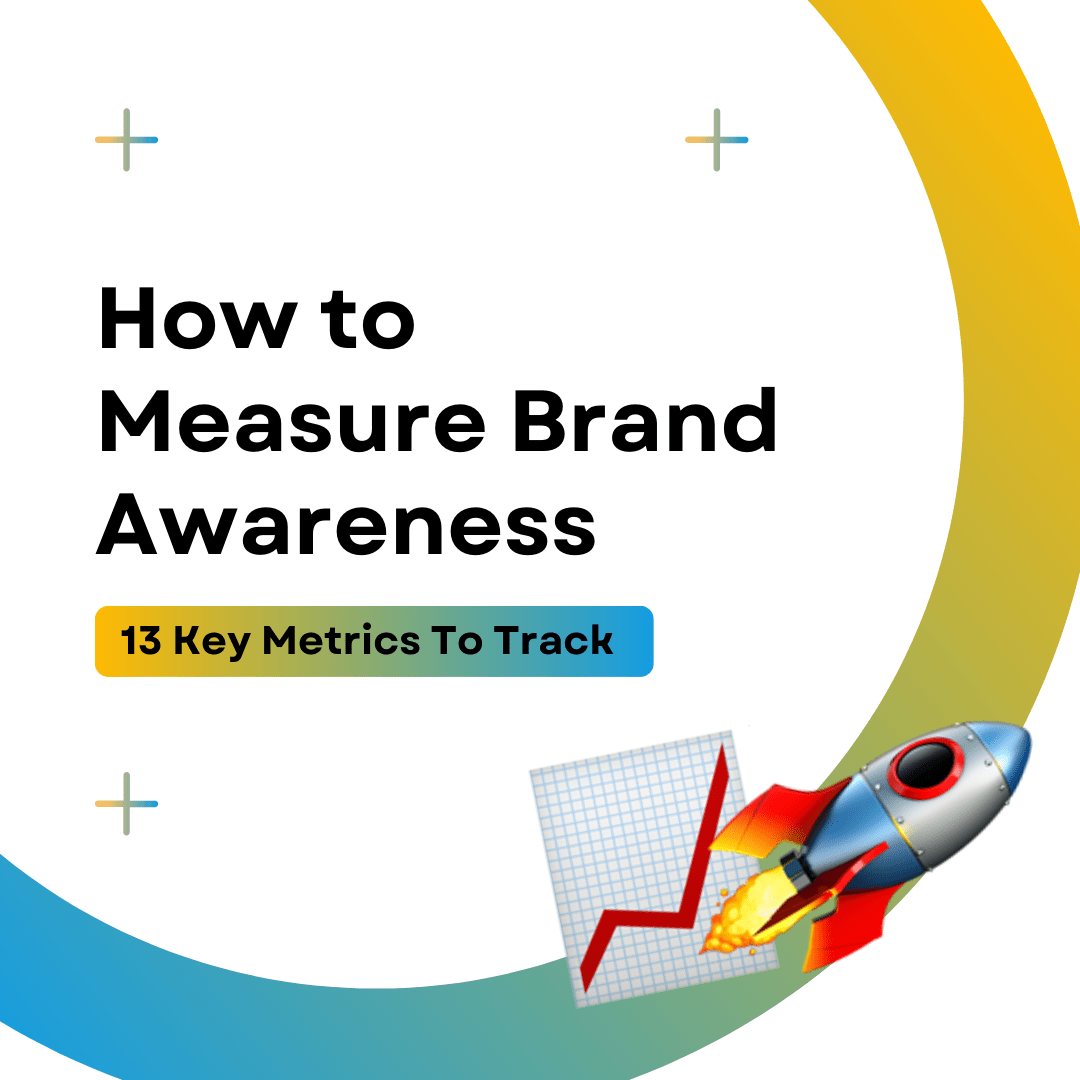How Are Smart Assistants Changing the Online Shopping Experience? Smart assistants like Alexa and Google…
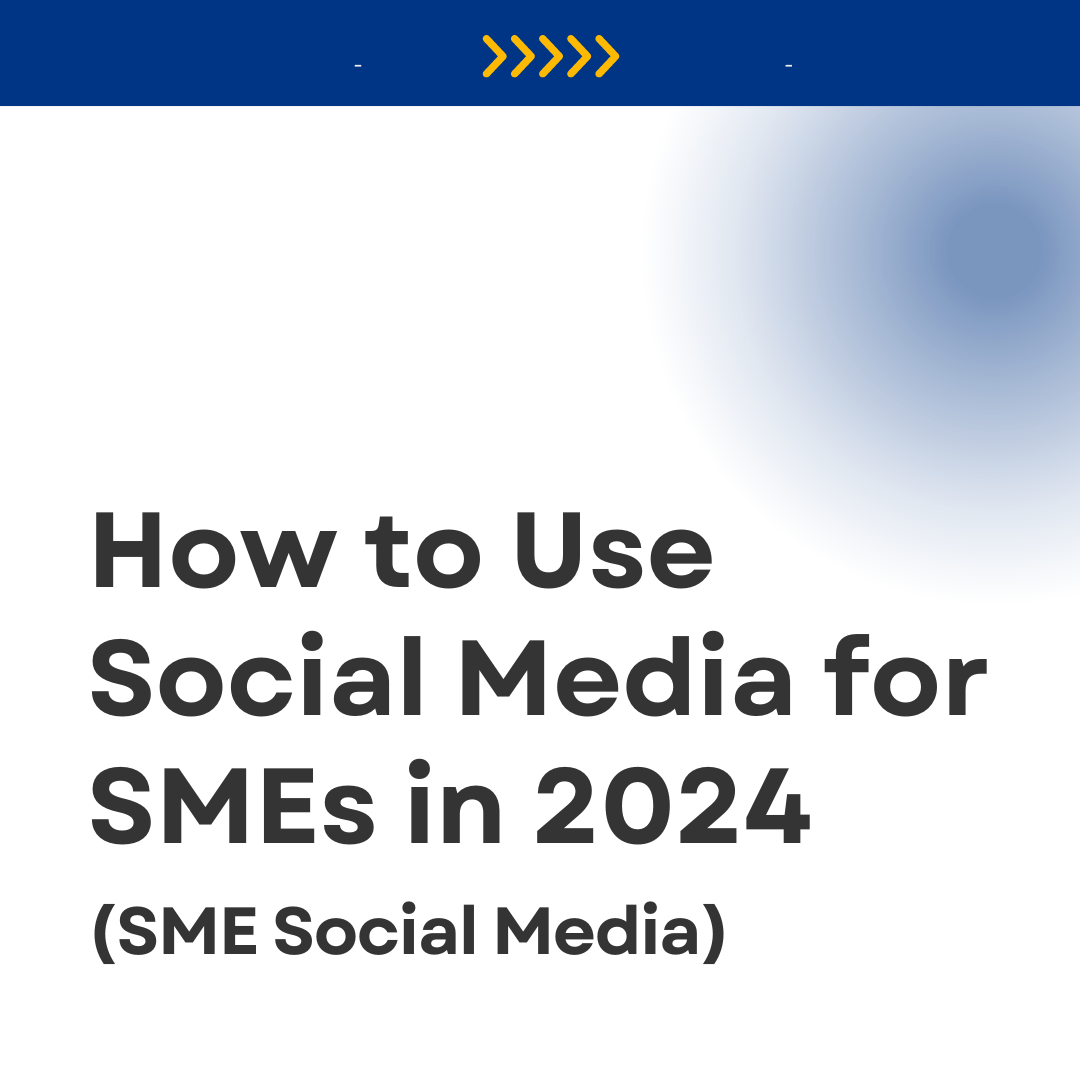
How to Use Social Media for SMEs in 2024 (SME Social Media)
How to Use Social Media for SMEs in 2024 (SME Social Media)
Not getting the conversions you need for your small or medium-sized enterprise (SME)? Social media has become essential for SMEs, offering powerful platforms to connect with customers and drive business growth. It has revolutionised marketing for small businesses, providing cost-effective ways to increase visibility, engage with customers, and gain valuable market insights. In this blog, we’ll explore how SMEs can effectively use social media in 2024, from choosing the right platforms to crafting compelling content, leveraging paid ads, and analysing performance for continuous improvement.
Explain how Social Media has Impacted Marketing for Small Businesses – Benefits of SME Social Media
Increased Visibility with SME Social Media
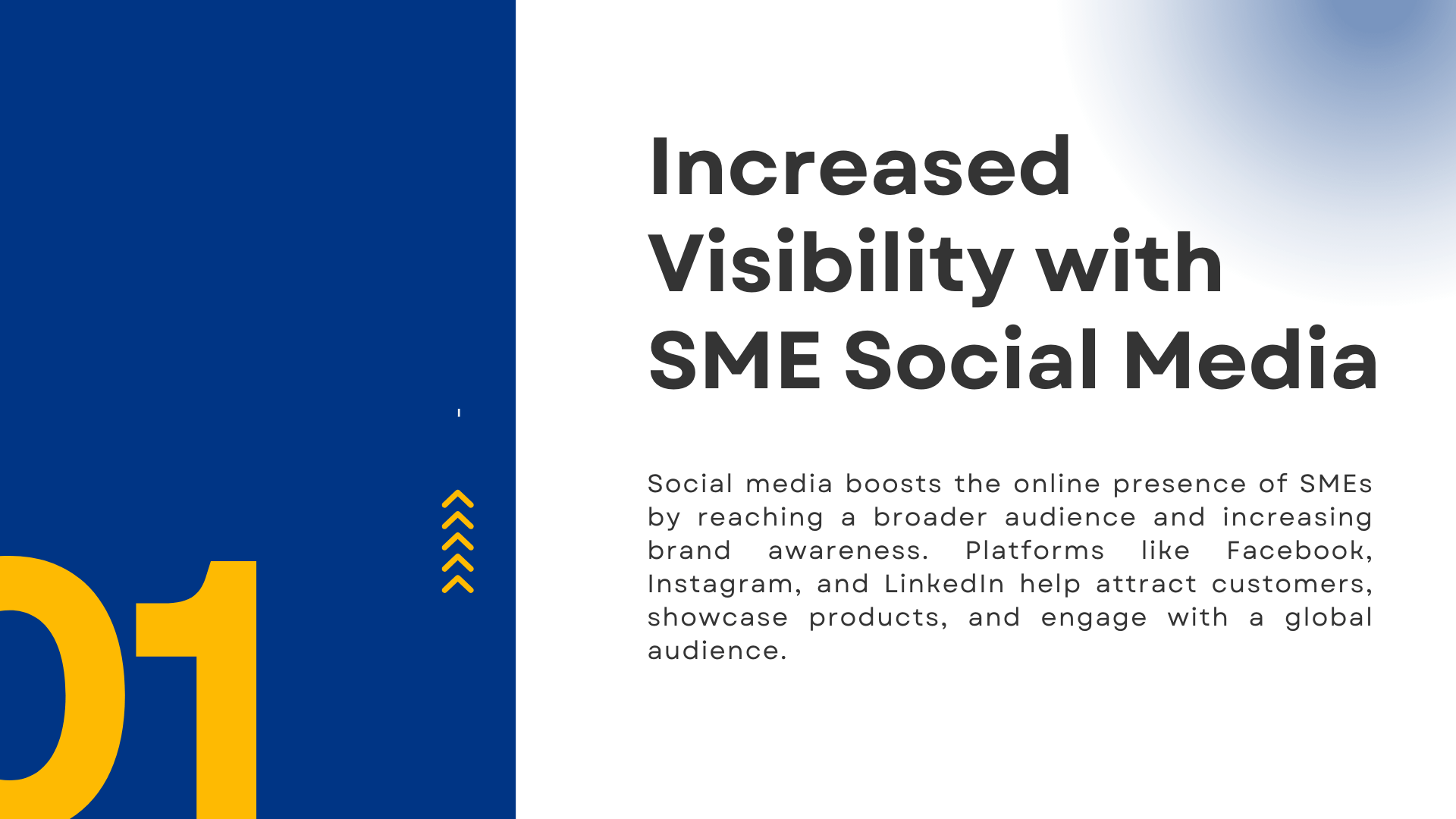
SME social media significantly enhances the online presence of small and medium-sized enterprises by providing a platform to reach a broader audience. Establishing a presence on social media platforms helps SMEs increase brand awareness, attract potential customers, and stay competitive. In today’s digital age, having a robust online presence is not just beneficial but essential. Social media and small business platforms like Facebook, Instagram, and LinkedIn allow SMEs to showcase their products, tell their brand story, and engage with a global audience.
Customer Engagement – Social Media and Small Businesses
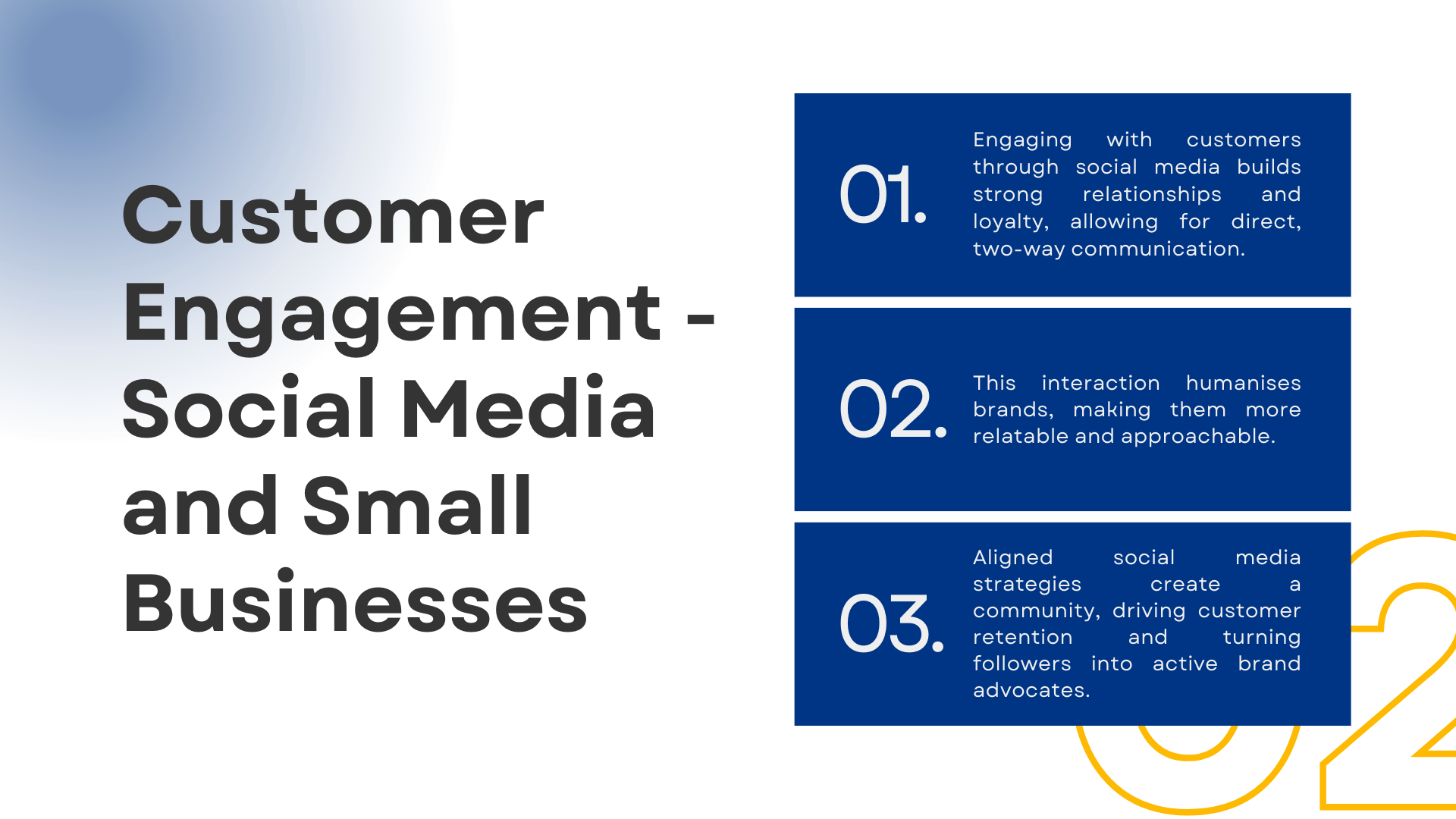
Engaging with customers through social media platforms is crucial for building strong relationships and building loyalty. Unlike traditional marketing channels, social media allows for two-way communication, enabling businesses to interact directly with their customers. This interaction can include responding to comments, conducting polls, and creating content that encourages conversation.
The importance of social media in business lies in its ability to humanise brands, making them more relatable and approachable. When small businesses and social media strategies align, they can create a sense of community among their followers, driving customer retention and satisfaction. This level of engagement is what sets social media small business efforts apart, transforming passive followers into active brand advocates.
Cost-Effective Marketing for Small Businesses
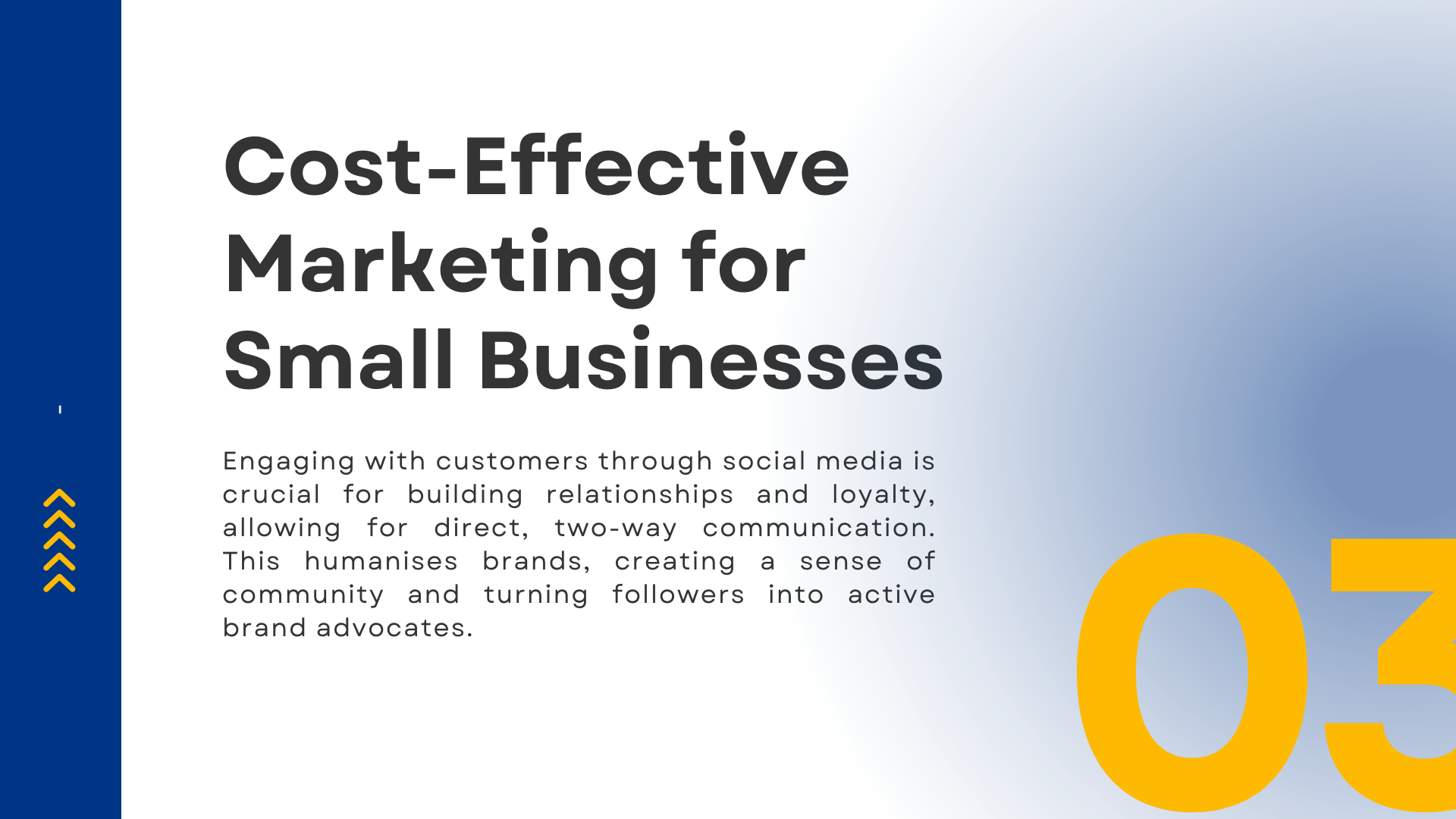
Social media offers a cost-effective alternative to traditional marketing methods, allowing SMEs to reach a large audience without a significant financial outlay. Traditional marketing channels like TV, radio, and print ads can be prohibitively expensive for small businesses. In contrast, social media platforms offer both free and paid advertising options that can be tailored to fit any budget. The impact of social media marketing affects small businesses by providing measurable and high ROI. This underscores why small businesses need social media: it levels the playing field, allowing them to compete with larger companies. Furthermore, social media ads can be highly targeted, ensuring that marketing efforts reach the right audience at the right time, thus maximising the efficiency of the marketing spend.
Market Insights with Social Media Analytics

Using social media analytics provides invaluable insights into customer behaviour and preferences. These platforms offer detailed analytics tools that track engagement metrics, audience demographics, and content performance. By leveraging this data, SMEs can make informed decisions about their marketing strategies and product offerings. This demonstrates how social media helps small businesses: it turns raw data into actionable insights. Understanding what content resonates with your audience, when they are most active, and how they interact with your brand can drive strategic decisions that enhance overall business performance.
SME Social Media Strategy
Setting Clear SME Social Media Goals
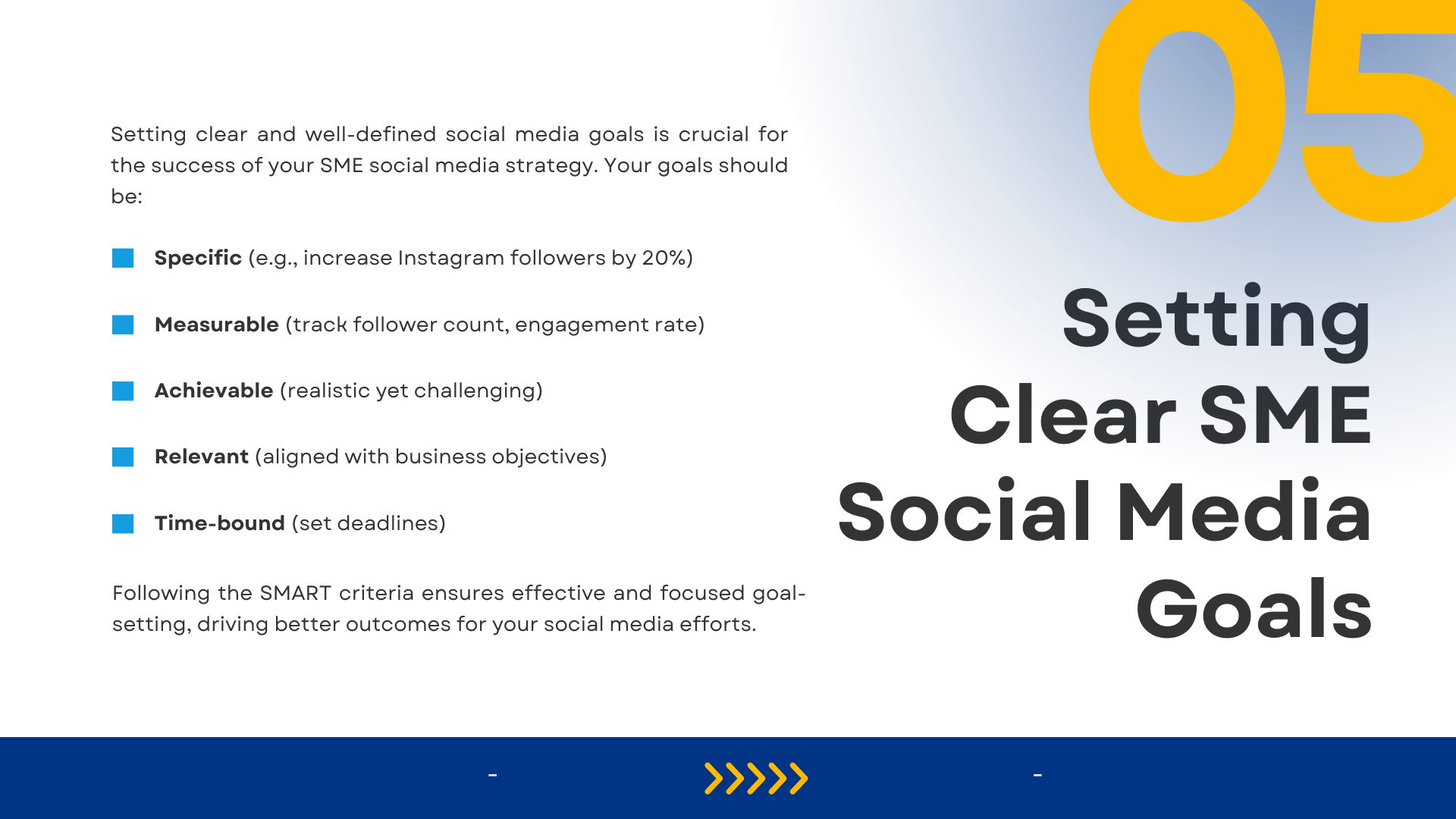
Setting clear and well-defined social media goals is crucial for the success of your social media strategy. To ensure your goals are effective, they should follow the SMART criteria: Specific, Measurable, Achievable, Relevant, and Time-bound.
- Specific: Clearly define what you want to achieve. Instead of a vague goal like “increase followers,” aim for something like “increase Instagram followers by 20%.”
- Measurable: Ensure you can track your progress. Use metrics like follower count, engagement rate, and conversion rate to measure success.
- Achievable: Set realistic goals that challenge you but are still attainable. Consider your current resources and capabilities.
- Relevant: Align your goals with your overall business objectives. For example, if your business goal is to increase sales, your social media goal could be to drive more traffic to your online store.
- Time-bound: Set a deadline for achieving your goals. This adds a sense of urgency and helps you stay focused.
Advice for Social Media and Small Businesses:
- Audit Your Current Social Media Presence: Evaluate your current performance to identify strengths and weaknesses.
- Set Baseline Metrics: Determine your current performance metrics to establish a starting point.
- Break Down Large Goals: Divide larger goals into smaller, manageable tasks.
Content Planning for Social Media and Small Businesses
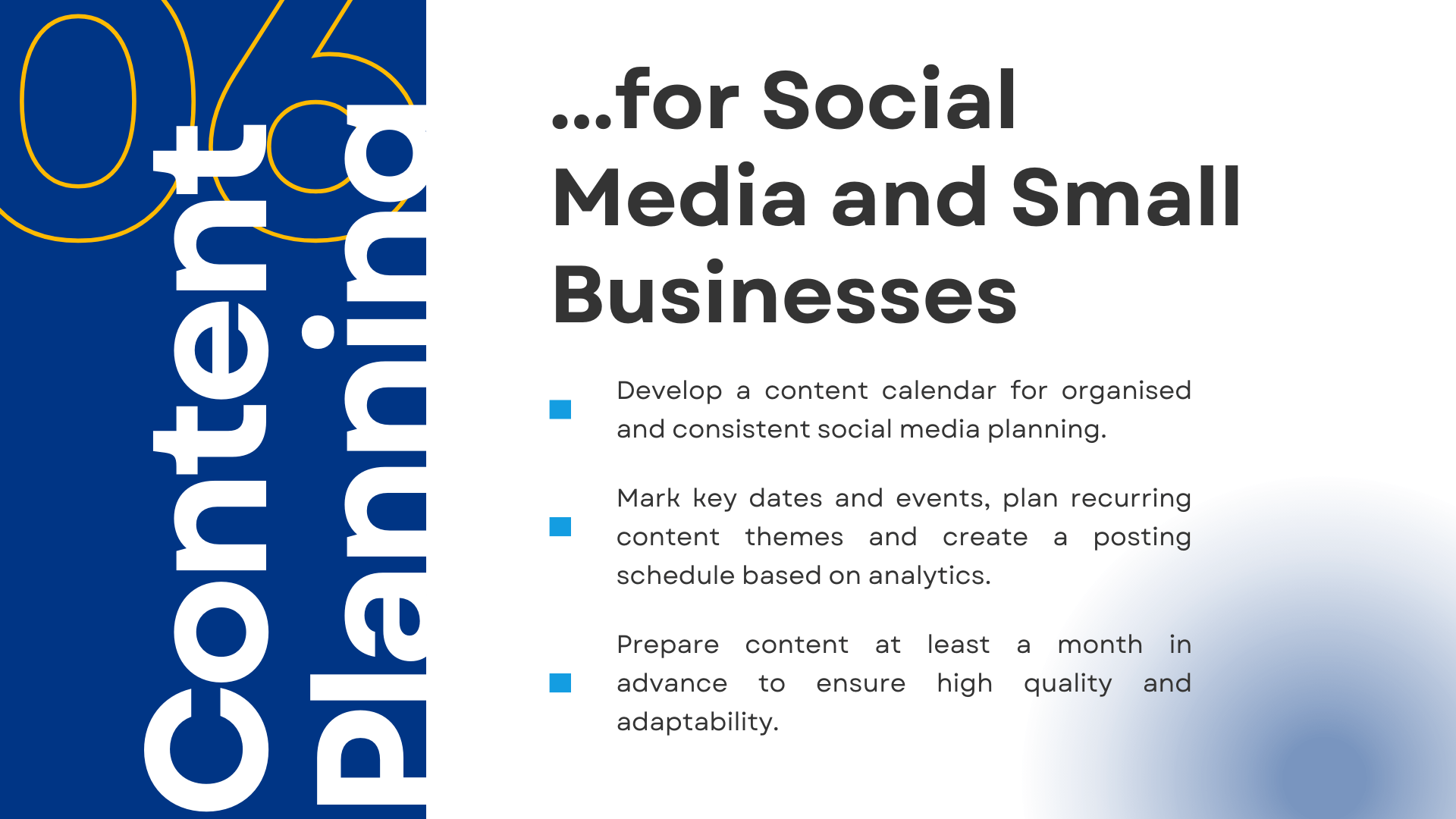
Developing a content calendar is essential for organised and consistent social media content planning. A content calendar helps you plan posts ahead of time, ensuring a steady flow of content and aligning with your social media goals.
- Identify Key Dates and Events: Mark important dates such as holidays, product launches, and industry events on your calendar.
- Plan Content Themes: Decide on recurring themes or content types for each day or week. For example, “Motivation Monday” or “Throwback Thursday.”
- Create a Posting Schedule: Determine the frequency and timing of your posts. Use analytics to find the best times to post for maximum engagement.
- Plan Ahead: Prepare content at least a month in advance. This gives you time to create high-quality posts and adapt to any changes.
Advice for Social Media and Small Businesses:
- Use Tools: Utilise tools like Trello, Asana, or Google Calendar to create and manage your content calendar.
- Batch Content Creation: Create multiple posts in one sitting to save time and ensure consistency.
- Monitor and Adjust: Regularly review your calendar and make adjustments based on performance analytics.
SME Social Media Engagement Tactics
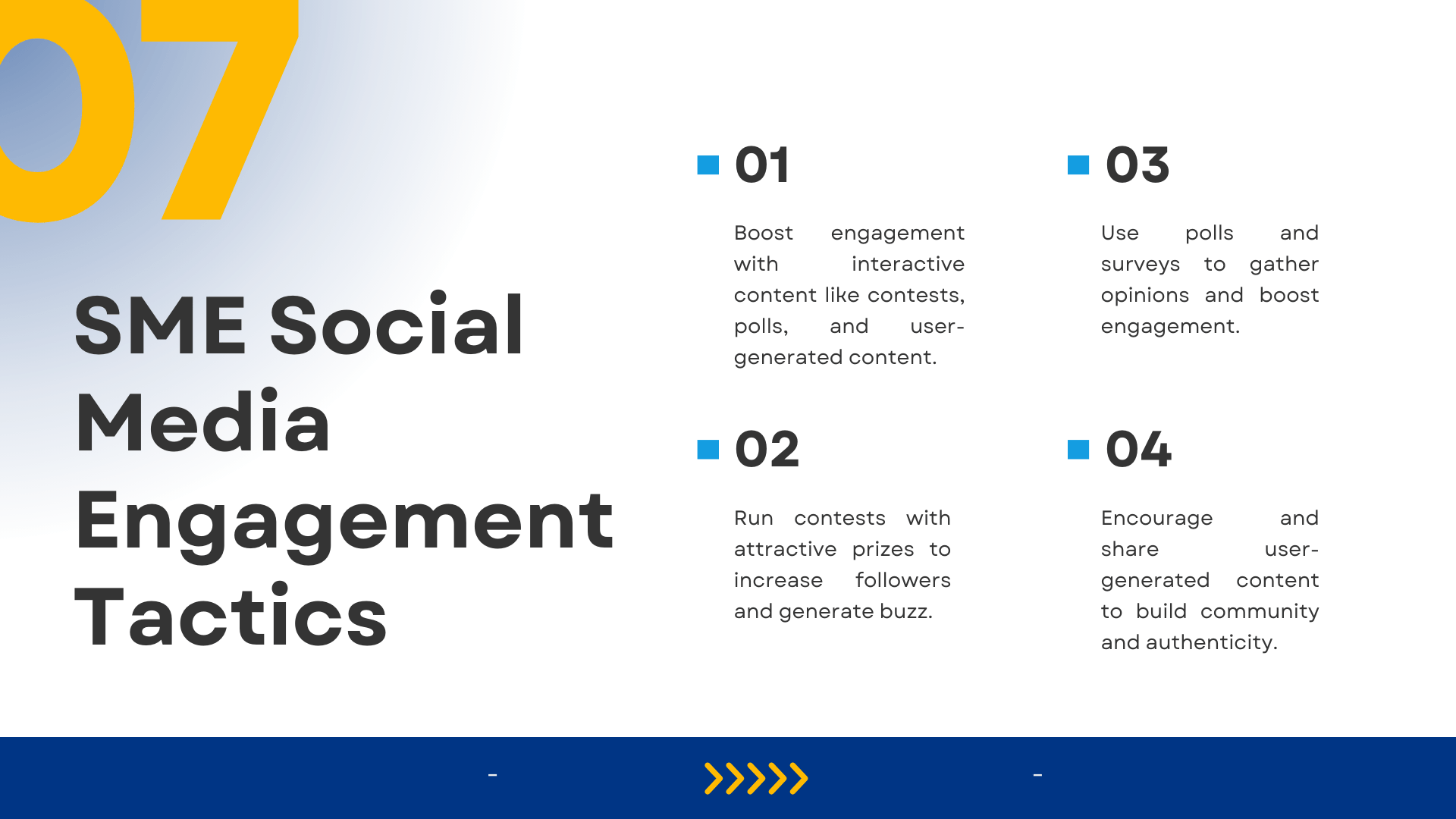
Boosting engagement on social media requires strategic planning and creative tactics. Engagement tactics include interactive content such as contests, polls, and user-generated content.
- Contests: Run contests to encourage user participation. Offer attractive prizes and ensure the rules are simple. Contests can help increase followers, boost engagement, and generate buzz around your brand.
- Polls and Surveys: Use polls to gather opinions and insights from your audience. This not only boosts engagement but also provides valuable feedback.
- User-Generated Content (UGC): Encourage your followers to create and share content related to your brand. Share UGC on your profile to build a sense of community and authenticity.
Advice for Social Media and Small Businesses:
- Plan and Promote Contests: Outline the contest details, promote it across all platforms, and ensure compliance with platform guidelines.
- Engage with Participants: Respond to comments, likes, and shares to show appreciation and foster a sense of community.
- Showcase UGC: Feature user-generated content prominently on your social media profiles to encourage more participation.
How to Craft Compelling Content
Visual Content
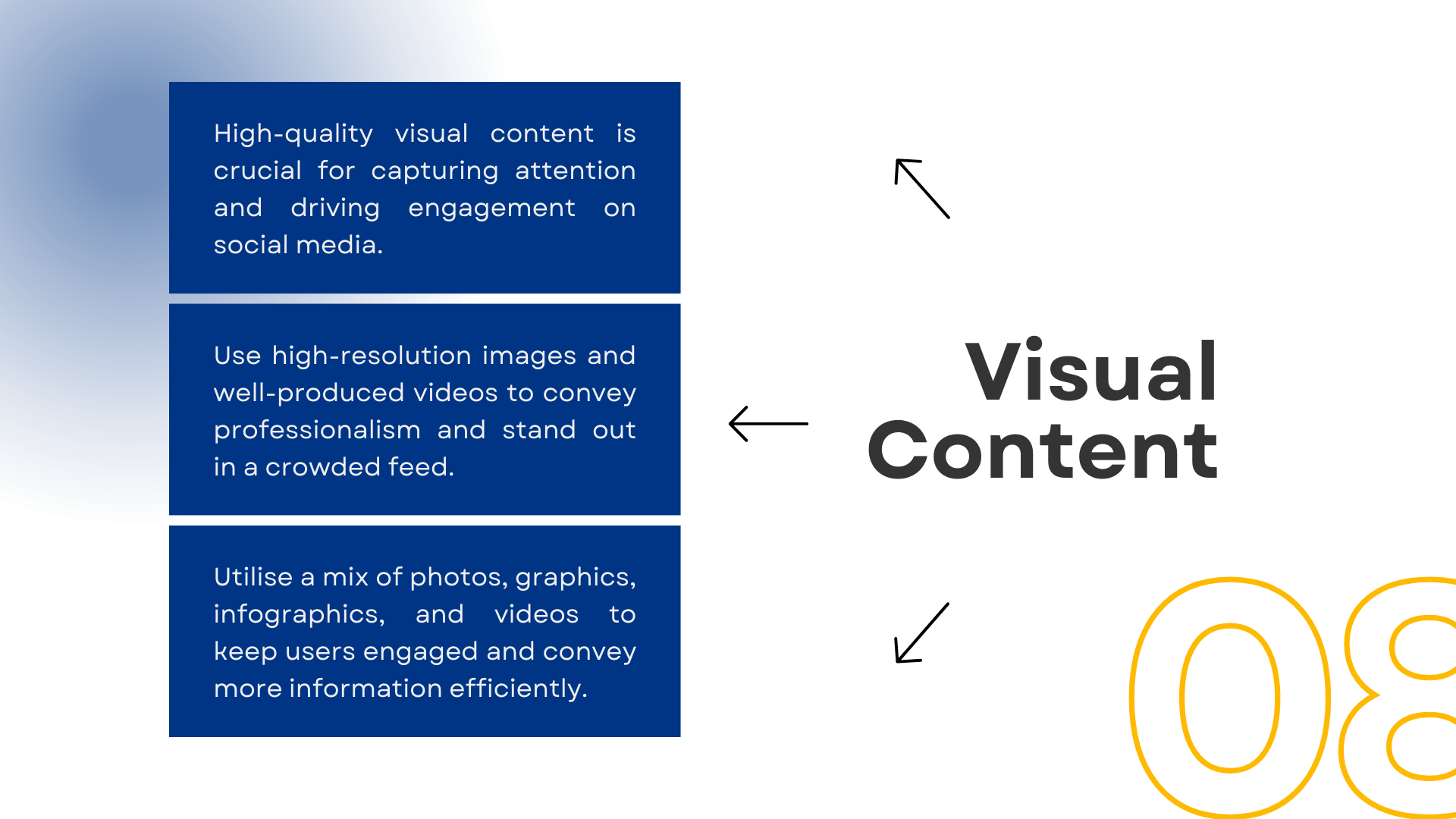
High-quality visual content is crucial for capturing attention and driving engagement on social media. Images and videos are more likely to be shared and liked compared to text-only posts, making them essential components of any social media strategy.
- Importance of High-Quality Visuals: High-resolution images and well-produced videos convey professionalism and attract more engagement. They help your brand stand out in a crowded feed and make a lasting impression.
- Types of Visual Content: Utilise a mix of photos, graphics, infographics, and videos. Videos, in particular, are highly effective, as they can convey more information in a shorter time and keep users engaged longer.
Social Media and Small Businesses – Tips
- Invest in Good Equipment: Use high-quality cameras and lighting to ensure your visuals are sharp and professional.
- Edit Professionally: Use editing software to enhance your images and videos. Tools like Adobe Photoshop, Lightroom, and Premiere Pro can significantly improve the quality of your content.
- Optimise for Platforms: Tailor your visual content to fit the specifications of each social media platform. For example, use square images for Instagram and horizontal videos for YouTube.
Storytelling in Marketing

Storytelling in marketing is a powerful way to create an emotional connection with your audience. By telling compelling stories, you can humanise your brand and make it more relatable.
- Crafting Stories: Share the journey of your brand, customer success stories, or behind-the-scenes looks at your business. Personal stories resonate more with audiences and can build a deeper connection.
- Structure Your Stories: Ensure your stories have a clear beginning, middle, and end. Introduce a problem, show how your brand provides a solution, and conclude with the positive outcome.
Social Media and Small Businesses – Tips
- Identify Your Brand’s Core Message: Understand what your brand stands for and convey this message consistently in your stories.
- Use Authentic Narratives: Share genuine stories that reflect real experiences and values. Authenticity builds trust and loyalty.
- Incorporate Visuals: Enhance your stories with visual content to make them more engaging and memorable.
SME Social Media and small businesses – Consistency and Branding

Maintaining brand consistency and a unified visual style across all platforms is essential for building a recognisable and trustworthy brand.
- Consistent Brand Voice: Develop a distinct brand voice that reflects your company’s values and personality. Use this voice consistently in all your communications to create a cohesive brand identity.
- Visual Style: Establish a consistent visual style, including colour schemes, fonts, and design elements. This helps in creating a strong brand presence and makes your content instantly recognisable.
Social Media and Small Businesses – Tips
- Create Brand Guidelines: Develop a comprehensive brand style guide that outlines your brand voice, colour palette, typography, and other visual elements. Ensure all team members adhere to these guidelines.
- Use Templates: Utilise design templates for social media posts to maintain a consistent look and feel. Tools like Canva and Adobe Spark offer customisable templates that align with your brand aesthetics.
- Audit Regularly: Conduct regular audits of your social media profiles to ensure consistency in branding. Make necessary adjustments to align with your brand guidelines.
Analysing Performance and Adjusting Strategies for SME Social Media Marketing
Key Metrics to Track SME Social Media

Tracking the right social media metrics is essential for measuring the success of your campaigns and overall strategy. Focus on the following key metrics:
- Engagement: Measures how users interact with your content through likes, comments, shares, and saves. High engagement indicates that your content resonates with your audience.
- Reach: Refers to the number of unique users who have seen your content. This metric helps you understand the extent of your brand’s visibility.
- Conversions: Tracks the number of users who take a desired action after interacting with your social media content, such as making a purchase, signing up for a newsletter, or filling out a contact form.
SME Social Media Tips:
- Set Benchmarks: Establish baseline metrics to compare future performance.
- Monitor Trends: Look for patterns over time to identify what content performs best.
- Use Specific Goals: Tie each metric to specific business objectives for clearer insights.
Using Analytics Tools

Effective tracking and analysis require the right social media analytics tools. Here are some recommended tools for monitoring your social media performance:
- Google Analytics: Tracks traffic from social media to your website and measures conversions.
- Facebook Insights: Provides detailed analytics for your Facebook page, including engagement, reach, and demographics.
- Instagram Insights: Offers metrics for Instagram business accounts, such as profile visits, website clicks, and audience demographics.
- Hootsuite Analytics: Consolidates data from multiple social media platforms and provides in-depth performance reports.
- Sprout Social: Offers comprehensive analytics and reporting features, along with tools for engagement and scheduling.
SMEs Social Media Tips:
- Use Multiple Tools: Combine data from different tools for a more comprehensive view.
- Automate Reports: Set up automated reports to regularly review performance without manual effort.
- Focus on Actionable Insights: Prioritise metrics that provide clear, actionable insights to guide your strategy.
- SEO Keywords: social media analytics tools, tracking tools
Adjusting Your Social Media Strategy
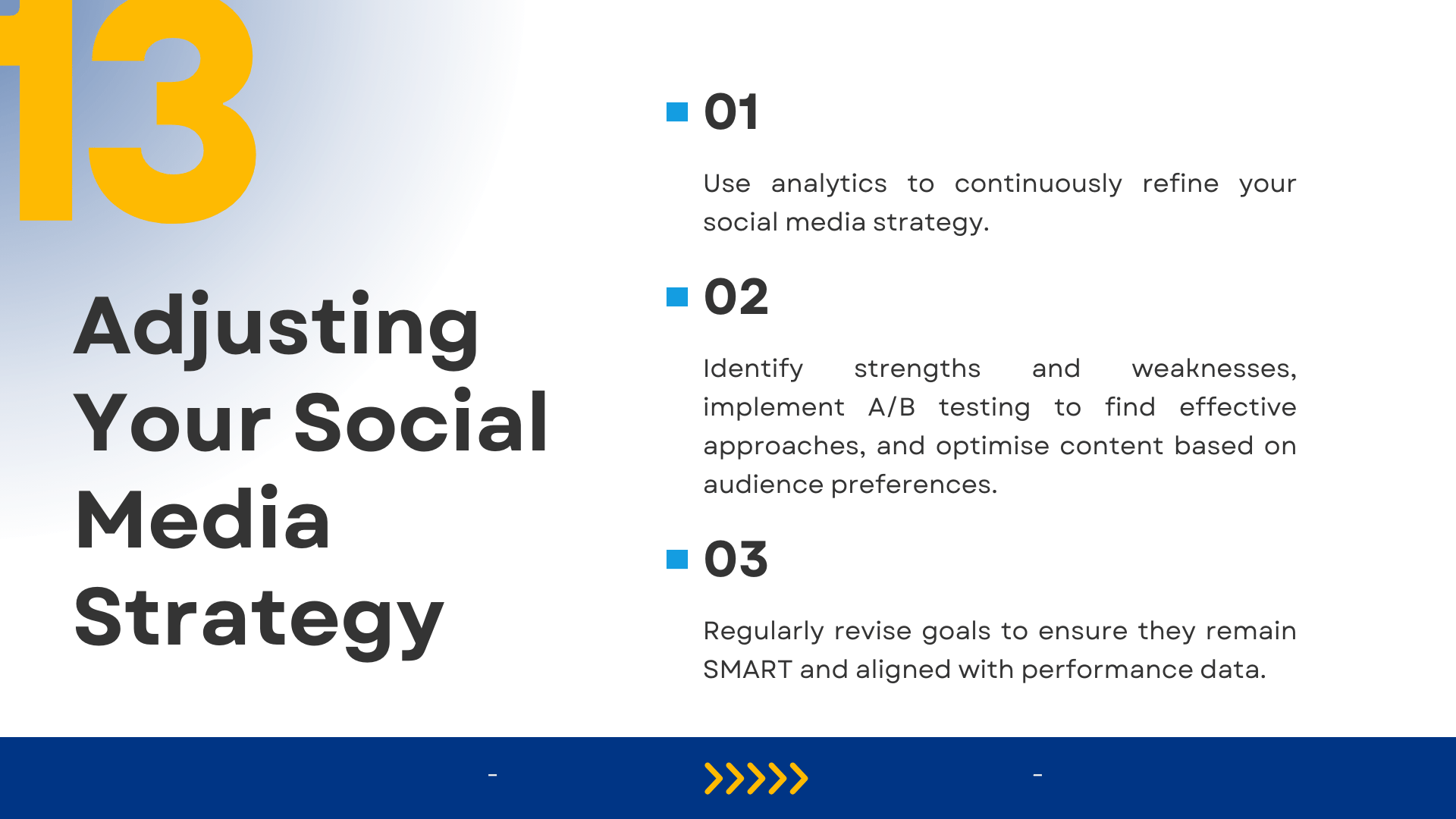
Using insights from analytics is crucial for continuous strategy adjustment and social media optimisation. Here’s how to refine and improve your social media strategy based on performance data:
- Identify Strengths and Weaknesses: Use your analytics data to pinpoint what’s working and what isn’t. Focus on content types, posting times, and engagement tactics that perform well.
- Test and Learn: Implement A/B testing to experiment with different content formats, headlines, and calls-to-action. Analyse the results to identify the most effective approaches.
- Optimise Content: Adjust your content based on audience preferences and performance metrics. For example, if video content consistently performs better, increase your video production.
- Revise Goals: Regularly review and update your social media goals based on your performance data. Ensure that your goals remain SMART (Specific, Measurable, Achievable, Relevant, and Time-bound).
SME Social Media Tips:
- Create a Feedback Loop: Continuously collect and analyse data to inform your strategy.
- Stay Flexible: Be prepared to adapt your strategy based on new insights and changes in the social media landscape.
- Engage Your Audience: Use feedback from your audience to guide your content and engagement tactics.
Conclusion: How Does Social Media Help Small Businesses
A well-planned social media strategy is crucial for the growth of SMEs. By understanding the unique advantages that social media offers and implementing targeted, data-driven approaches, businesses can enhance their online presence, engage more effectively with their audience, and achieve their marketing objectives. Social media is a dynamic and powerful tool that, when used strategically, can significantly impact a business’s success.



